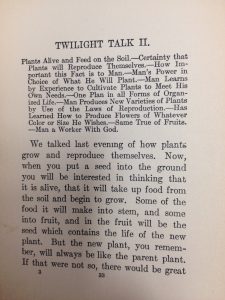Unit 1
1:1 Introduction: Intent of this Medium

Why post a photo of a bicycle on a wall? This blog is intended to be a medium for Canadian literature and cultural analysis. I figure the best way to start is with a personal anecdote.
I moved into my new apartment two weeks ago. It is slightly under 200 square feet. Significantly more spacious than the Vancouver dwellings I remember, but for Hamilton ON it is a tiny hobbit hole. Perhaps other areas have varying schemes of what is normal.
The westcoaster at heart could not give up the bicycle, so I lived with it on the floor for two weeks, doing tasks such as cooking, studying and working in and amongst the bike. I’ve been trying to figure out how to fix a bike rack onto the wall by using wooden dowels. Though my father was a heavy duty mechanic and I’m originally from interior BC from a working class background, my mechanical knowledge beyond bicycles is severely limited. I played witness to a host of home and automotive projects since a young age, but I was never really taught the mechanics.
The dowel bike rack operation did not work how I was attempting to do it. I went to the hardware store a few times, but I was too cheap to buy a studfinder and I never mastered the trick of tapping the walls for the solid portions. I also found that using the back of a drill as a mallet is not effective for putting in drywall anchors, even when you predrill. So I went for the functional, though less attractive garage wallmount.
Why share this? Is there a connection to Canadian literature?
Communities shape our experiences. What opportunities to learn or what we value is as much shaped by the skills we learn to value growing up, as it is the centres that the educated youth choose to move to and work in. My roots are in rural BC, my decisions root in logic that is shaped by the abstract web of sciences and arts. I live in a city, though Hamilton is working class in its history.
Within this course I look forward to exploring the intersectionality between class, geography, and economic opportunities for growth in Canadian society. A great deal of this course focuses on colonialism and postcolonial perspectives of the previously colonized. I look forward to hearing the voices that are often muted and distorted by the majority.
As for myself, I am finishing my fourth year at UBC in the interdisciplinary studies program. My expected graduation is this December.
I have a program focus of social and environmental determinants of health, with the majority of my courses in the social sciences and sciences. Primarily I focus on the impact of geography and resources on a persons well being, as well as the interplay between the health of the environment and the health of humans. With this, I leave you with a link to a thesis on phytoremediation, a process that involves using plants to clean toxic soil in urban centres.
References:
Parkinson, Kendra. Bicycle On The Wall. 2016. Print.
Todd, Leila. “Phytoremediation: An Interim Landscape Architecture Strategy For Canadian Municipalities”. Masters. Guelph, 2013. Print.
1:3 Contracts and Ceremonies: Duality of Meaning Existing in Partnerships
The menial aspects of the day to day and the rituals we perform without a second thought form the basis of great life decisions. Chamberlin notes how table manners can differ across cultural boundaries, and when one ascribes to a certain social group they have to adhere to their groups rules, which in turn promotes ‘othering’ (Chamberlin 235). This ‘othering’ has a trickle down effect influencing our social circles, how we act in response to differences, and could eventually lead to conflict and disbelief in the ‘others’ storyline or perspective

However, human memory is short and the values we ascribe to certain knowledge today are foreign to those we identified with just over a hundred year ago. These photos are excerpted from a book on sexual health published in the late 19th century that alludes to the human physiology being much like the reproductive process of plants (Kellogg 23). God is referenced in this passage as well, further emphasizing our use of stories in western society (just as in all other cultures) to explain the day to day.
There is a fault in this analysis. Endless divides exist as we are all individuals. Intersectionality proclaims that we are a part of many social groups, some which contradict each other. It is perhaps this that both avoids and contributes to conflict, particularly when a person wishes to please the masses.
When names are not used properly, language will not be used effectively; when language is not used effectively, matters will not be taken care of; when matters are not taken care of, the observance of ritual propriety and the playing of music do not flourish; when ritual propriety and the playing of music do not flourish, the application of laws and punishments is not on the mark; when the application of laws and punishments is not on the mark, the people will not know what to do with themselves. – Confucius in The Analects, from If This Is Your Land, Where Are Your Stories?
Devastating life events such as war, famine or displacement and homelessness can be attributed to misunderstanding ceremonies, and not seeing a duality of beliefs according to Chamberlin (Chamberlin 229). The Gitskan, as noted in the story about the land claims surrounding the grizzly-earthquake, are an exception, where they believe both storylines. Some may claim that this is because of a financial gain on their part, but I would like to believe that one could respect both trains of thought associated with an event that happened 7,000 years ago. However, these are examples of grand life events. The large blow that leads to a revolution, or destroys a civilization. What about daily conventions?
I found the quote from Confucius to be very applicable to a recent disagreement with my partner. We are making arrangements for our wedding next Spring. Looking at venues I tend to focus on the functionality of a space and he focuses more on the aesthetic value. We both wish for our families and friends to come together next spring and feel comfortable, well fed and hopefully enjoying the festivities of our wedding day. The wedding is a grand event, filled with ceremony and tradition. My partner and I do not ascribe to some of the traditional aspects that originate from the Christian sanctity of marriage, though bits and pieces have seeped through our psyches from families that are deeply engrained in us as to what we think are important. Honouring certain traditions will help make our families more comfortable, and to us, there is value in establishing those ties at our ceremony and the events leading up to bringing our families together. Ultimately, having a comfortable space for the ceremony to take place will be both functional and aesthetically pleasing. Otherwise the people will not know what to do with themselves.
References
Chamberlin, J. Edward. If This Is Your Land, Where Are Your Stories?. Chapter 11: Ceremonies. Cleveland, Ohio: Pilgrim Press, 2004. Print.
Kellogg, John Harvey. Plain Facts For Old And Young. Charlottesville, Va.: University of Virginia Library, 1889. Print.
1:5 Dishonouring Voices: How Evil Came Into the Medical World
I have a great story to tell you. A medical story. Sure, boo. Patients voices can be shrouded, particularly when clarity of thought may not be present. This is not to target any particular physician, but merely react to a situation in my own life, and share how dishonouring a person’s journey (health or otherwise) can become common practice quite easily, and lead to a sort of evil.
What is it like to have your thoughts all muddled that you lose your own perspective? Most individuals have experienced this occasionally – a blood rush when standing up too quickly, seeings stars. This temporary detachment from your body where you barely feel alive and can feel yourself breathing. Lasts only a second.
Some people experience this on a daily basis, and it is quite constant in nature. Technical words such a hypovolemia, neurocardiogenic syncope, tachycardia are tossed around, but this does not illustrate the sheer terror an individual feels when these events occur. Or when a physician explains that they do not know why a person’s neurological workings are not regulating blood pressure and heart rate in a way that most people take for granted (*cough cough, biological theory on homeostasis).
“I can make anyone faint. Your medication is working, you’re not fainting all over the place. Plop, plop, plop. Stop being so pessimistic.”
As pessimism causes illness, fatigue, and fainting, so one should not feel emotions. Yes, let’s encourage people to ignore negative emotions when they are struggling on a daily basis for basic clarity of thought. What am I writing about again? (I kid).
Insert feminist discussion on fainting and its roots in hysteria. Perhaps more interesting is how originally dysautonomia was known as neurasthenia (imbalance of the autonomic nervous system), then got downgraded at the turn of the 20th century to be known as hysteria (also around the time of twilight sleep) and only at the turn of another century (the 21st), is dysautonomia recognised as an illness that effects 1 in 100 people.
How do we speak for those who lose their train of thought? When the good days are up and down, or the minutes of the day are so topsy turvy? Is there a way to properly advocate for oneself under these circumstances in a medical environment that is so quick to jump to blaming the ‘patient’ for their lifestyle, as the medical reasonings are not yet founded to explain the physiological process that is occurring? How do we work with the layers of a complicated process such as the human body, when we don’t know the whole story of how each individual operates? When we fail to listen to the voices of those we should honour while we try to aid them?
Maybe it is turtles all the way down.
I’ve reiterated this story to family members and my partner. With each telling, the tears and rage come through in different ways. One thing I find is that forgiveness for myself and medical professionals increases with each telling.
Here is a fainting goat for your viewing pleasure:

Works Cited:
Farmer, A. et al. “Neuraesthenia Revisited: ICD-10 And DSM-III-R Psychiatric Syndromes In Chronic Fatigue Patients And Comparison Subjects”. The British Journal of Psychiatry 167.4 (1995): 503-506. Web.
MIT + K12,. Homeostasis. 2013. Web.
The Goat Guide,. Fainting Goat. 2015. Web.
“Twilight Sleep & Childbirth And Feminism”. Tiny Cat Pants. N.p., 2007. Web.